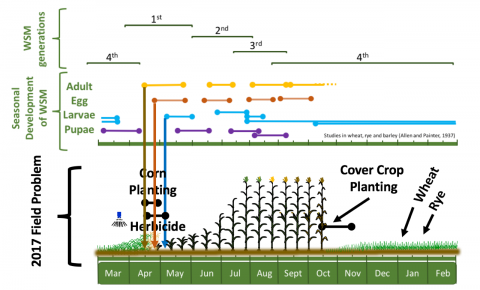Wheat Stem Maggot Adult Monitoring: A Pest of Cover Crop-to-Corn Transitions
April 25, 2018
This article looks at wheat stem maggots in cover crops-to-corn transitions, including their biology, risk for damage to early season corn, and what to look for this spring.
Wheat Stem Maggot in Corn: Plan on Scouting Your Cover Crop Fields This Spring
March 8, 2018
Wheat stem maggots were an issue for some eastern and southern Nebraska farmers planting corn directly into a growing cover crop, leading to questions about how to best manage this scenario in 2018. Learn why entomologists don't recommend adding an insecticide to the herbicide when terminating the cover crop.
Adult Emergence of Suspected Wheat Stem Maggot from Infested Corn Plants
June 22, 2017
University researchers are studying why suspected wheat stem sawflies are being found again this year in Nebraska corn, previously thought to be a non-host. Major yield loss is not expected in corn from this pest.


